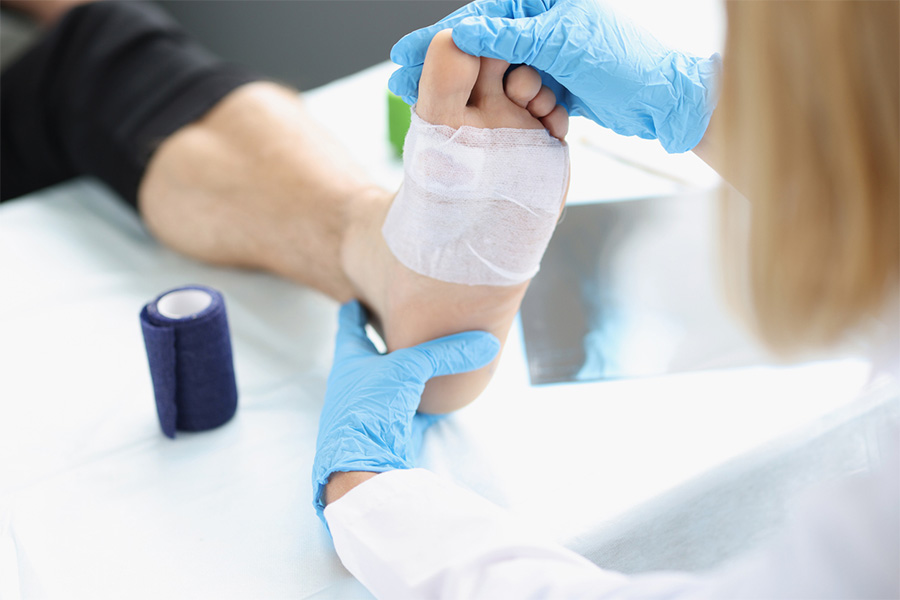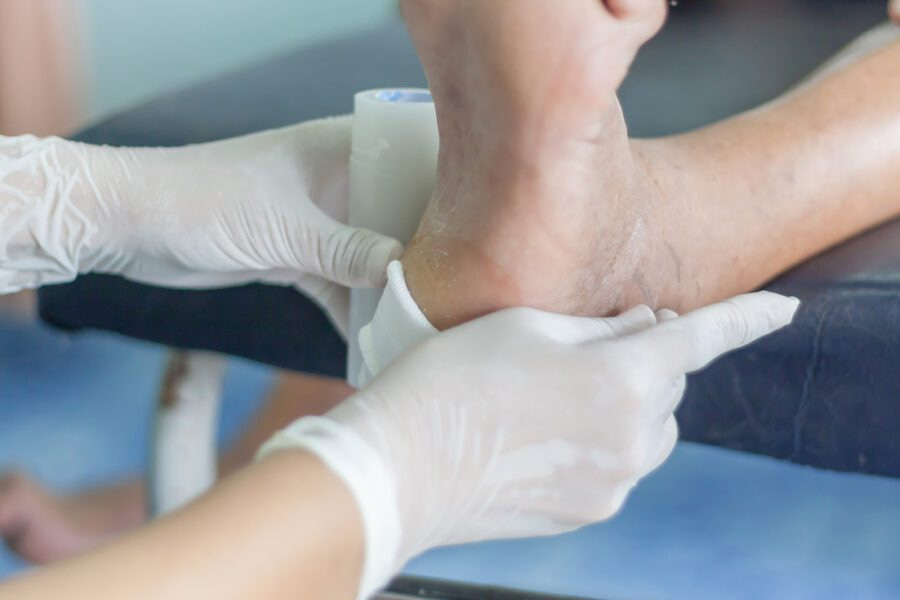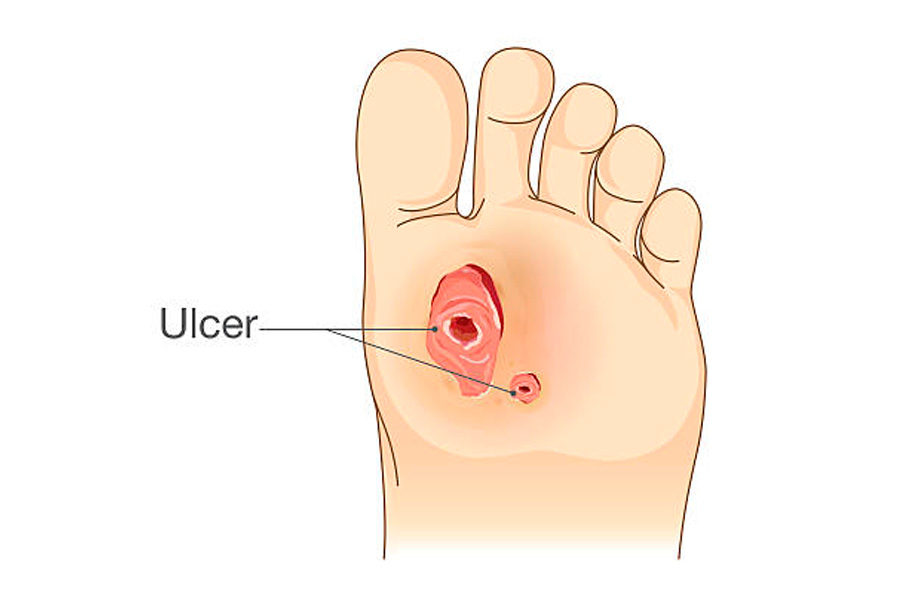Among the many symptoms that diabetics can experience is a pain in their lower extremities. This happens because diabetes, which is characterized by high blood sugar levels, can cause nerve damage, which means that the nerves in the feet may not be able to send signals properly. This can lead to pain, numbness, or tingling in the feet. In order to find relief from foot pain, diabetics need to seek diabetic foot care from a qualified medical professional or a podiatrist. A podiatrist specializes in foot and ankle care and is highly trained in providing diabetic foot care.
Let’s talk about the surgical and non-surgical options for diabetic foot pain.
Non-Surgical Treatment Options for Diabetic Foot Pain
There are four main non-surgical options for treating diabetic foot pain: diabetic wound care, medication, physiotherapy, and orthotics.
- Diabetic wound care is the proper care of diabetic wounds, which involves cleaning the wound, applying antibiotic ointment, and dressing the wound.
- Medication can help to relieve pain and inflammation. Commonly used medications include analgesics, anti-inflammatories, and corticosteroids.
- Physiotherapy can help improve circulation and reduce swelling. Treatment may involve exercises, massage, heat or cold therapy, electrical stimulation, or ultrasound.
- Orthotics (custom shoe inserts) can help redistribute weight evenly across the foot, avoid pressure points, and provide support for weak areas of the foot. This is one device that is often used in offloading or to take pressure off a wound. Diabetic shoes, padded socks, and crutches are other methods of offloading.
Surgical Options for Diabetic Foot Pain
Surgery is usually recommended in cases of a buildup of dead or infected tissue around an ulcer or a severe infection of the limb. Podiatrists strive to preserve the integrity of the foot and avoid surgery. However, in severe cases, the surgical options for diabetic foot pain are:
- Debridement: This procedure involves carefully cutting away dead or infected tissue from the foot to promote healing. It can be done using a scalpel, laser, or other methods depending on the extent of the damage. The doctor will use a disinfectant solution to clean out the wound.
- Amputation: This is the most extreme surgical option and is usually only considered when all other options have failed. It involves removing the affected limb, usually part or all of the foot, to stop the spread of infection. The American Diabetes Association (ADA) reports that about 15 percent of people with diabetes will develop a foot ulcer at some point in their lives. Of those, approximately 6 percent will require amputation of the affected foot or leg. This is why it is critical to get podiatric care when you have diabetes and experience even the most minor tingling, numbness, pain, or wound on the foot or ankle.
Diabetic Foot Care in Cincinnati, OH
As a diabetic, your feet require a high level of care. The podiatrists at Cincinnati Foot & Ankle Care are highly trained and experienced in providing top-notch diabetic foot care in Cincinnati. We try to resolve diabetic foot pain with non-surgical treatments and offer you guidance on how to properly care for your feet, avoid complications, and preserve your limb. We are also highly skilled in performing minimally invasive surgery to address diabetic foot complications.
Our staff treats patients with a great level of respect and compassion. For any questions about our diabetic foot care services or to schedule an appointment with one of our doctors, call our podiatry clinic nearest you or use our convenient online appointment request form.
Share

People with diabetes often experience difficulty healing wounds.




